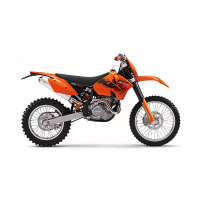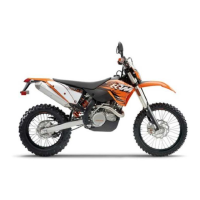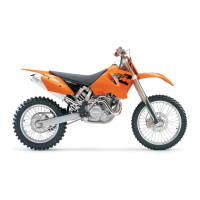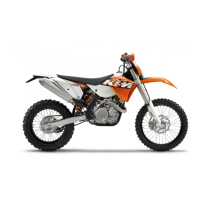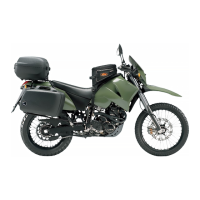301ENGINE
-
WORK
ON
THE
INDIVIDUAL
PARTS
130
Chackina
tha
timina
assembly
/8
.
~
c
o§?
.,
\
I
C1!
C1!
~
O
I4t
200173-01
Praparinalha
timin
Intake
134.20
...
34.40
mm
(1.3465
...
1.3543
in)
•
If
the measured value does not meet specifications:
- Change the camshaft.
- Clean all parts well.
- Check the timing chain wheelltiming chain sprocket
0 for damage and wear.
•
If
there is damage or wear:
- Replace the
timing
chain wheelltiming chain sprocket.
- Check the timing chain tensioning
rail.
for damage and wear.
•
If
there is damage or wear:
- Replace the
timing
chain tensioning rail.
- Check the timing chain guide
rail.
for damage and wear.
•
If
there is damage or wear:
- Replace the
timing
chain guide rail.
- Check the timing chain securing
guide.
for damage and
wear.
•
If
there is damage or wear:
- Replace the
timing
chain securing guide.
- Check timing
chain.
for damage and wear.
•
If
there is damage or wear:
- Replace the
timing
chain.
- Check the timing chain links for smooth operation. Let the timing chain hang down
freely.
•
The
chain links
no
longer align in a straight line:
- Replace the
timing
chain.
-
Press
the
timing
chain tensioner together completely.
•
Info
I This requires some force.
as
the oil must
be
pressed out.
-
Release
the
timing
chain tensioner.
,/
Without pressure. the
timing
chain tensioner expands fully.
- Place two spacing washers or similar aids next
to
the
timing
chain tensioner piston.
This ensures that, when pressed in, the piston cannot
go
in all the
way.
Guideline
1
Th
ickness of the spaci ng washers
12
...
2.5
mm
(0.08
...
0.098
in)
-
Release
the
timing
chain tensioner.
,/
The detent mechanism engages and the piston remains in place.
Final position of the piston after
engagement
•
Info
3
mm
(0.12
in)
I This position is necessary for installation.
If
the
timing
chain tensioner is now pressed again and is only extended a
maximum of half
way
(it
is prevented from extending completely). This locks
the detent mechanism and the timing chain tensioner
can
no
longer
be
squeezed together. This function is necessary in order to ensure sufficient
timing chain tension
even
at low oil pressures.
301ENGINE
-
WORK
ON
THE
INDIVIDUAL
PARTS
130
Chackina
tha
timina
assembly
/8
.
~
c
o§?
.,
\
I
C1!
C1!
~
O
I4t
200173-01
Praparinalha
timin
Intake
134.20
...
34.40
mm
(1.3465
...
1.3543
in)
•
If
the measured value does not meet specifications:
- Change the camshaft.
- Clean all parts well.
- Check the timing chain wheelltiming chain sprocket
0 for damage and wear.
•
If
there is damage or wear:
- Replace the
timing
chain wheelltiming chain sprocket.
- Check the timing chain tensioning
rail.
for damage and wear.
•
If
there is damage or wear:
- Replace the
timing
chain tensioning rail.
- Check the timing chain guide
rail.
for damage and wear.
•
If
there is damage or wear:
- Replace the
timing
chain guide rail.
- Check the timing chain securing
guide.
for damage and
wear.
•
If
there is damage or wear:
- Replace the
timing
chain securing guide.
- Check timing
chain.
for damage and wear.
•
If
there is damage or wear:
- Replace the
timing
chain.
- Check the timing chain links for smooth operation. Let the timing chain hang down
freely.
•
The
chain links
no
longer align in a straight line:
- Replace the
timing
chain.
-
Press
the
timing
chain tensioner together completely.
•
Info
I This requires some force.
as
the oil must
be
pressed out.
-
Release
the
timing
chain tensioner.
,/
Without pressure. the
timing
chain tensioner expands fully.
- Place two spacing washers or similar aids next
to
the
timing
chain tensioner piston.
This ensures that, when pressed in, the piston cannot
go
in all the
way.
Guideline
1
Th
ickness of the spaci ng washers
12
...
2.5
mm
(0.08
...
0.098
in)
-
Release
the
timing
chain tensioner.
,/
The detent mechanism engages and the piston remains in place.
Final position of the piston after
engagement
•
Info
3
mm
(0.12
in)
I This position is necessary for installation.
If
the
timing
chain tensioner is now pressed again and is only extended a
maximum of half
way
(it
is prevented from extending completely). This locks
the detent mechanism and the timing chain tensioner
can
no
longer
be
squeezed together. This function is necessary in order to ensure sufficient
timing chain tension
even
at low oil pressures.
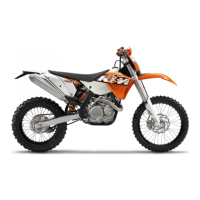
